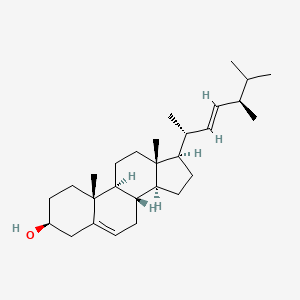| Authors | Title | Published | Journal | PubMed Link |
|---|---|---|---|---|
| pmid: | ||||
| Bortolomeazzi R et al. | Mass spectrometry characterization of the 5alpha-, 7alpha-, and 7beta-hydroxy derivatives of beta-sitosterol, campesterol, stigmasterol, and brassicasterol. | 1999 | J. Agric. Food Chem. | pmid:10552610 |
| Cvejić JH and Rohmer M | CO2 as main carbon source for isoprenoid biosynthesis via the mevalonate-independent methylerythritol 4-phosphate route in the marine diatoms Phaeodactylum tricornutum and Nitzschia ovalis. | 2000 | Phytochemistry | pmid:10656403 |
| Bishop GJ and Yokota T | Plants steroid hormones, brassinosteroids: current highlights of molecular aspects on their synthesis/metabolism, transport, perception and response. | 2001 | Plant Cell Physiol. | pmid:11230564 |
| Schaeffer A et al. | The ratio of campesterol to sitosterol that modulates growth in Arabidopsis is controlled by STEROL METHYLTRANSFERASE 2;1. | 2001 | Plant J. | pmid:11319028 |
| Giner JL et al. | Definitive structural identities of 42 sterol components in Pneumocystis carinii. | 2001 | J. Eukaryot. Microbiol. | pmid:11906032 |
| Pazos AJ et al. | Sterol composition of gonad, muscle and digestive gland of Pecten maximus from Málaga (South Spain). | 2003 | Comp. Biochem. Physiol. B, Biochem. Mol. Biol. | pmid:12628375 |
| Fedina EO et al. | Contribution of lipoxygenase metabolism to the brassinosteroid signaling pathway. | 2004 Mar-Apr | Dokl. Biochem. Biophys. | pmid:15253557 |
| Lembcke J et al. | Rapid quantification of free and esterified phytosterols in human serum using APPI-LC-MS/MS. | 2005 | J. Lipid Res. | pmid:15489546 |
| Zhao HB et al. | Ganoderma total sterol (GS) and GS1 protect rat cerebral cortical neurons from hypoxia/reoxygenation injury. | 2005 | Life Sci. | pmid:15607331 |
Brassicasterol
Brassicasterol is a lipid of Sterol Lipids (ST) class. Brassicasterol is associated with abnormalities such as Systemic disease and Diabetes Mellitus. The involved functions are known as Drug Interactions, cholesterol metabolism, Synthesis, cholesterol absorption and Increased Cholesterol Synthesis. Brassicasterol often locates in Back, Cell membrane and Tissue membrane. The related lipids are Total cholesterol, Sterols, campesterol, brassicasterol and lathosterol.
Cross Reference
Introduction
To understand associated biological information of Brassicasterol, we collected biological information of abnormalities, associated pathways, cellular/molecular locations, biological functions, related genes/proteins, lipids and common seen animal/experimental models with organized paragraphs from literatures.
What diseases are associated with Brassicasterol?
Brassicasterol is suspected in Systemic disease, Diabetes Mellitus and other diseases in descending order of the highest number of associated sentences.
Related references are mostly published in these journals:
| Disease | Cross reference | Weighted score | Related literature |
|---|
No disease MeSH terms mapped to the current reference collection.
PubChem Associated disorders and diseases
What pathways are associated with Brassicasterol
There are no associated biomedical information in the current reference collection.
PubChem Biomolecular Interactions and Pathways
Link to PubChem Biomolecular Interactions and PathwaysWhat cellular locations are associated with Brassicasterol?
Visualization in cellular structure
Associated locations are in red color. Not associated locations are in black.
Related references are published most in these journals:
| Location | Cross reference | Weighted score | Related literatures |
|---|
What functions are associated with Brassicasterol?
Related references are published most in these journals:
| Function | Cross reference | Weighted score | Related literatures |
|---|
What lipids are associated with Brassicasterol?
Related references are published most in these journals:
| Lipid concept | Cross reference | Weighted score | Related literatures |
|---|
What genes are associated with Brassicasterol?
There are no associated biomedical information in the current reference collection.
What common seen animal models are associated with Brassicasterol?
There are no associated biomedical information in the current reference collection.
